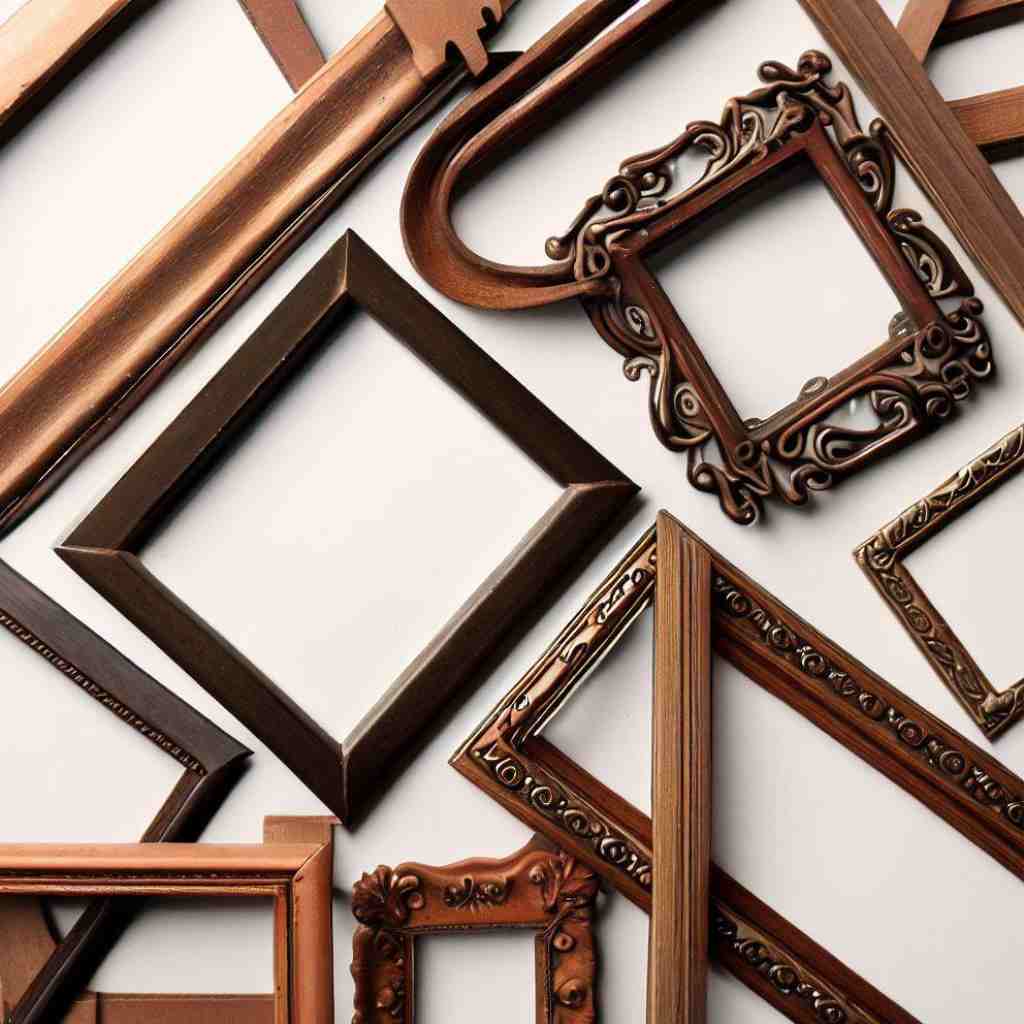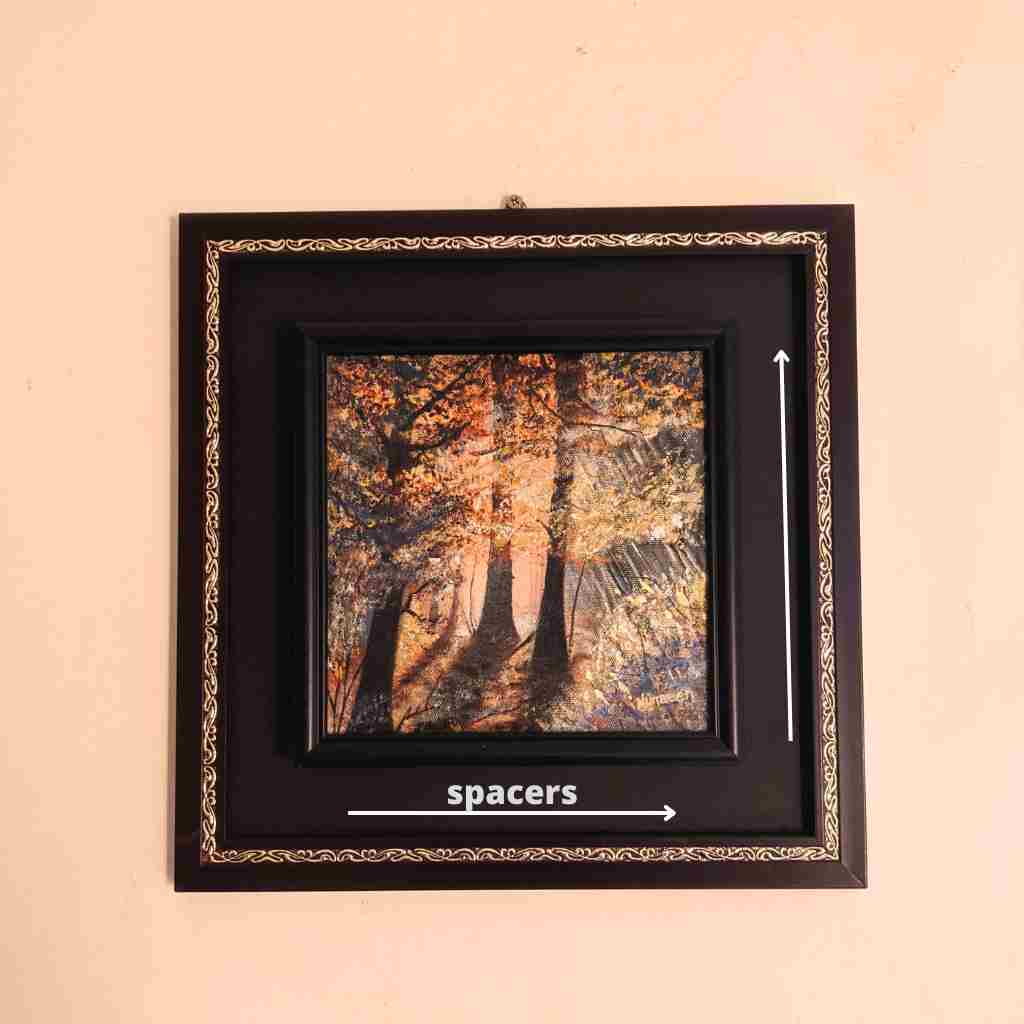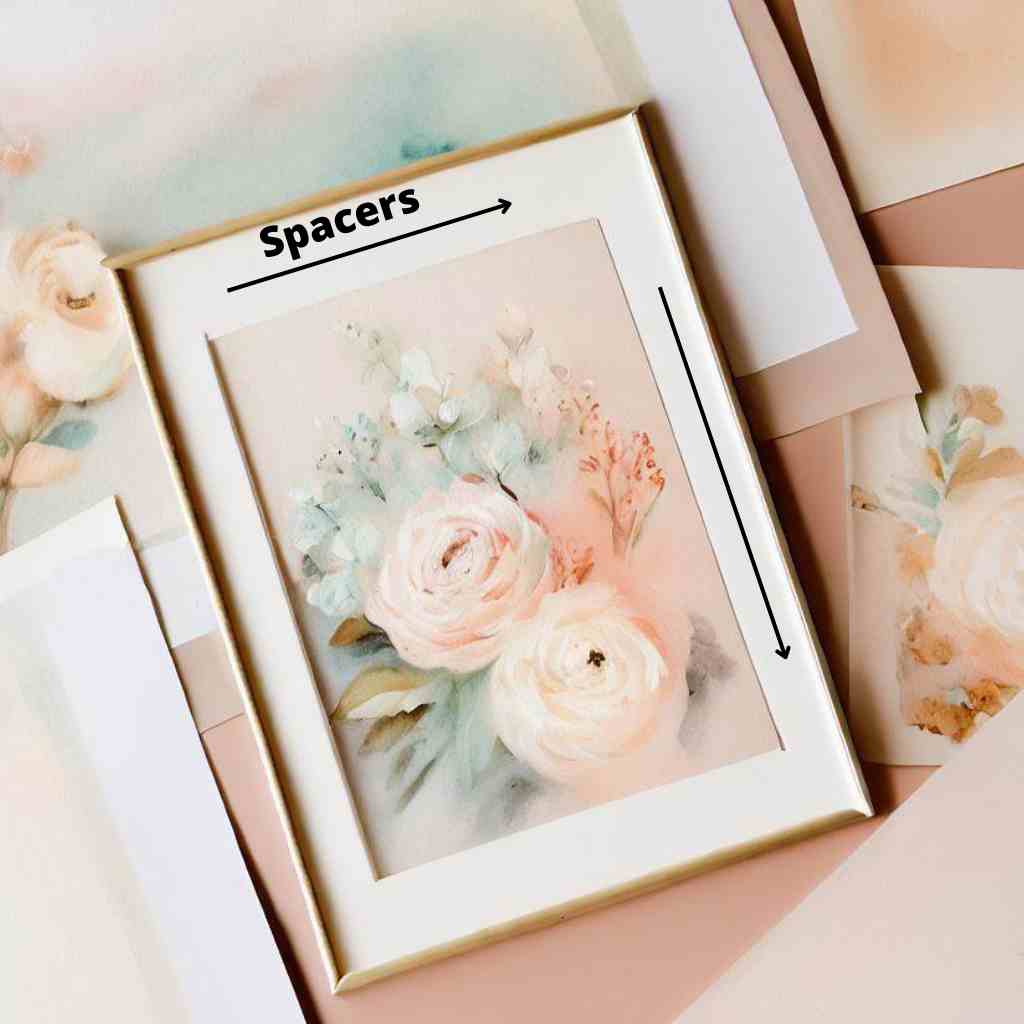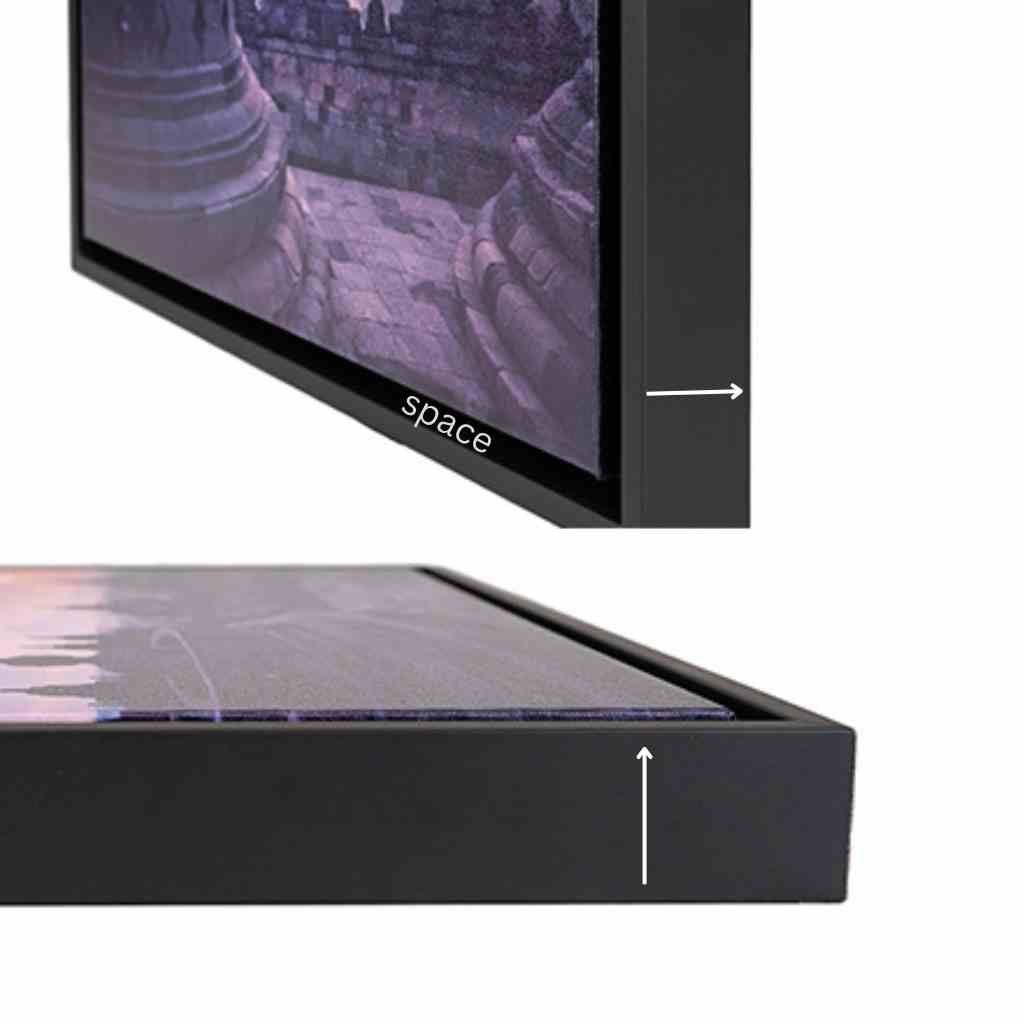If you’ve ever wondered how to frame pastel paintings to enhance their impact and preserve their delicate essence, you’ve come to the right place.
Imagine your beautiful pastel creations, alive with vibrant colors and delicate textures, embraced by the perfect frame.
In this guide, we will go on an artistic journey together, revealing the secrets and techniques behind framing pastel paintings like a true master.
Let’s unlock the full potential of your pastel paintings through the art of framing.

Choosing the Right Frame
Sealing your soft pastels is an essential step in maintaining their quality before framing. Here are a few things to remember when choosing a frame for a pastel painting-
A. Understanding Different Frame Styles and Materials
When it comes to framing pastel paintings, there is a wide range of frame styles and materials to choose from.
Traditional wooden frames exude elegance and timelessness, adding a touch of sophistication to the artwork.
On the other hand, contemporary metal frames offer a sleek and modern look, perfect for showcasing contemporary or abstract pastel paintings.
For those seeking ornate and decorative frames, intricate designs and embellishments can bring a touch of opulence to the artwork.
B. Considering the Artwork’s Style and Theme
To select the perfect frame for your pastel painting, it is essential to consider the artwork’s style and theme. The frame should harmonize with the subject matter and artistic style, complementing its mood and aesthetic.
For example, a rustic wooden frame may be suitable for landscape paintings, while a sleek and minimalist frame could enhance the impact of minimalist pastel artwork.


By choosing a frame that aligns with the artwork’s style and theme, you create a cohesive visual narrative.
C. Selecting a Frame that Complements the Pastel Colors
Pastel paintings are known for their soft, delicate colors. When selecting a frame, it’s important to choose one that complements these subtle hues rather than overpowering them.

Opt for frames in neutral tones or colors that harmonize with the predominant shades in the artwork. A frame that complements the pastel colors will create a balanced and harmonious presentation, allowing the artwork to shine.
Mounting and Securing the Artwork
Properly mounting and securing your pastel painting is crucial for its longevity and protection. Here are the key considerations:
Measuring the dimensions of the pastel painting
Before proceeding with framing, it is crucial to measure the dimensions of the pastel painting accurately. Use a measuring tape or ruler to determine the artwork’s height and width, ensuring precise measurements. This information will guide you in selecting an appropriately sized frame and help you avoid any errors during the framing process.
Preparing the pastel painting for framing
Preparing the pastel painting: Before framing, ensure the artwork is clean and free from dust, debris, or loose pastel particles. Handle it with care to avoid accidental damage.
Mounting the Pastel Painting
A. Using a Mat or Spacer
Mounting a pastel painting with a mat or spacer creates a visual separation between the artwork and the frame, enhancing its overall presentation.
A mat adds depth and dimension, giving the artwork a sense of space within the frame. Alternatively, using a spacer can create a shadow box effect, providing a subtle visual separation without the presence of a mat.
Choose a mat or spacer color that complements the artwork and frame, further enhancing the overall aesthetic.
B. Considering the Size and Depth of the Painting
When framing a pastel painting, it is crucial to consider the size and depth of the artwork. Ensure that the frame you select provides adequate space for the artwork, allowing it to breathe within the frame.
A frame that is too tight may compress the pastel medium, resulting in smudging or damage.
Additionally, consider the depth of the artwork, especially if it has a heavily textured surface. Choose a frame that accommodates the depth comfortably, ensuring the artwork fits securely.
Securing the artwork to prevent movement and damage over time
To secure the pastel painting within the frame, use acid-free framing tape or appropriate mounting hardware. Carefully position the artwork within the frame, ensuring it aligns correctly.
Use tape or hardware to hold the artwork and backing board securely in place. This step is essential to prevent the artwork from shifting or falling when the frame is hung on the wall.
Protecting the Pastel Surface
The delicate nature of pastel paintings necessitates protective measures to safeguard the surface from dust, UV rays, and moisture. Consider the following:
A. Choosing Appropriate Glazing Options
To protect pastel paintings from dust, moisture, and other environmental factors, it is important to choose the appropriate glazing option.
Clear glass provides a classic and transparent finish, allowing the colors and details of the artwork to shine through. Non-glare glass reduces reflections, making it ideal for spaces with bright lighting or areas where direct sunlight may be an issue.
Alternatively, acrylic glazing offers lightweight and shatter-resistant protection, making it a safer option for transporting or hanging artwork in high-traffic areas.
B. Preventing Damage from UV Rays and Light Exposure
UV rays and light exposure can cause fading and discoloration of pastel paintings over time. To prevent such damage, consider using glazing options that offer UV protection.
Look for glass or acrylic with UV filtering properties that block harmful rays. This helps to preserve the integrity and longevity of the artwork, allowing it to be enjoyed for years to come.
C. Using Archival Materials for Long-Term Preservation
When framing pastel paintings, it is crucial to use archival-quality materials to ensure long-term preservation. Choose acid-free mat boards, archival tapes, and adhesives to avoid any potential chemical reactions that could harm the artwork.
Using acid-free materials prevents discoloration and deterioration of the artwork and helps maintain its original beauty for future generations to appreciate.
How to Frame Pastel Paintings: Framing Techniques
Explore different framing techniques to showcase your pastel artwork in unique and creative ways. Consider these three popular techniques:
A. Float Mounting
Float mounting is a technique that allows the artwork to appear as if it’s suspended within the frame, without the use of a mat.
This method is particularly suitable for pastel paintings with deckled edges or textured surfaces that you want to showcase.
Follow these steps to achieve a successful float mount:
- Measure and cut the mounting board: Begin by measuring the dimensions of your pastel painting. Use a sturdy and acid-free mounting board, such as a foam board or archival board, and cut it to match the size of your artwork.
- Attach the artwork to the mounting board: Place the pastel painting on the mounting board, aligning it carefully. Use archival mounting corners or archival adhesive to secure the artwork to the board. Ensure that the adhesive doesn’t come in contact with the pastel surface to avoid any damage.
- Create a spacer: To create the floating effect, you will need a spacer between the artwork and the glazing. Cut thin strips of archival foam or mat board to serve as spacers. Attach the spacers to the mounting board along the edges, ensuring they don’t touch the artwork.

- Frame the artwork: Select a frame that complements your pastel painting and the overall aesthetic you wish to achieve. Carefully place the mounted artwork into the frame, ensuring that it is centered and aligned. Secure the artwork within the frame using framing points or other appropriate fasteners.
B. Using Spacers to Create Depth
Another technique that adds depth and visual interest to framed pastel paintings is using spacers.
Spacers are small strips or blocks inserted between the artwork and the glazing, creating a physical separation and allowing the artwork to “breathe.”

This technique is especially useful when framing pastel paintings that have a heavily textured surface or multiple layers of pastel application.
To use spacers when framing a pastel painting, follow these steps:
- Prepare the artwork: Mount the pastel painting on a backing board, ensuring it is securely attached.
- Choose appropriate spacers: Select spacers that are made of archival materials, such as acid-free foam or mat board strips. Ensure that the spacers are the right thickness to achieve the desired depth effect.
- Place the spacers: Carefully position the spacers along the edges of the artwork, between the artwork and the glazing. The spacers should create an even gap between the artwork and the glazing throughout.
- Secure the spacers: Use archival adhesive or tape to hold the spacers in place. Be cautious not to apply any adhesive directly to the artwork.
- Complete the framing: Once the spacers are securely in position, proceed to insert the artwork with the spacers into the frame, and secure the frame using appropriate hardware.
C. Shadowbox Framing
Shadowbox framing adds depth and dimension to the presentation of your pastel artwork, creating a visually captivating effect.
This technique involves creating a gap between the artwork and the glazing.
Follow these steps to achieve a stunning shadowbox frame:
- Measure and cut the mounting board: Start by measuring the dimensions of your pastel painting. Cut a mounting board slightly larger than the artwork to allow for the gap between the artwork and the glazing. Ensure the mounting board is acid-free and sturdy.
- Attach the artwork to the mounting board: Place the pastel painting on the mounting board, aligning it carefully. Use archival mounting corners or archival adhesive to secure the artwork to the board. Ensure that the adhesive doesn’t come in contact with the pastel surface.
- Create the shadowbox effect: To create the gap between the artwork and the glazing, you will need spacers. Cut strips of archival foam or mat board to the desired thickness of the gap. Attach the spacers along the inner edges of the mounting board, creating a border that frames the artwork.
- Select a shadowbox frame: Choose a frame that complements your pastel painting and provides enough depth to accommodate the spacers and the mounted artwork. Shadowbox frames are typically deeper than regular frames to accommodate the desired effect.

- Frame the artwork: Place the mounted artwork into the shadowbox frame, ensuring it is centered and aligned. Secure the artwork within the frame using framing points or appropriate fasteners. Ensure the spacers remain in place and do not shift during the framing process.
Attaching Hardware and Hanging the Frame
After framing the painting, it’s time to attach all the hardware to the frame to hang it on the wall.
A. Installing D-rings or Wire for Hanging
To hang the framed pastel painting securely on the wall, it is important to install D-rings or wire on the back of the frame.
D-rings provide a sturdy attachment point, while wire offers flexibility in adjusting the hanging height. Ensure that the hardware is properly aligned and securely attached to the frame to support the weight of the artwork.
B. Ensuring Proper Weight Support
Before hanging the framed pastel painting, consider the weight of the artwork and choose appropriate hanging hardware that can support it.
Heavier frames may require heavy-duty wall hooks or wall anchors to ensure stability. It is crucial to follow the manufacturer’s instructions for the specific hardware and weight limitations to prevent any accidents or damage.
C. Positioning the Frame on the Wall
When deciding where to hang the framed pastel painting, consider factors such as lighting, room aesthetics, and visibility. Choose a location where the artwork can be appreciated without being exposed to direct sunlight or excessive moisture.
Consider the height at which the artwork should be hung, taking into account eye level and the overall balance of the space. Carefully measure and mark the desired position on the wall before hanging the frame.
Framing Tips and Common Mistakes to Avoid
There are a few common mistakes to avoid while framing a pastel painting to give it a professional look:
Avoiding Framing Mistakes that Can Damage the Artwork
When framing pastel paintings, it is important to avoid common mistakes that can damage the artwork. These include using acidic or low-quality framing materials that may cause discoloration or deterioration over time.
Ensure that the frame is properly sized and does not apply pressure on the edges or surface of the pastel painting. Avoid using adhesives directly on the artwork, as they can seep through and damage the delicate medium.
Ensuring Proper Sizing and Proportion
One of the key considerations when framing pastel paintings is ensuring proper sizing and proportions. A frame that is too large or too small for the artwork can disrupt the overall balance and visual appeal.
Take accurate measurements of the artwork and select a frame that complements its size and proportions, creating a harmonious presentation.
FAQs
- How do I measure and prepare a pastel painting for framing?
Use a tape measure or ruler to measure the dimensions of the artwork, including the height and width. Take precise measurements to ensure the frame fits accurately. Handle the artwork with care, wearing clean gloves to avoid transferring oils or dirt onto the surface. Place the painting on a clean and flat surface.
- Can I customize the frame for my pastel painting?
Absolutely! Customizing the frame allows you to add personal touches and tailor it to your specific preferences. You can choose unique frame styles, and finishes, and even incorporate decorative elements or details that complement the artwork and reflect your individuality.
- What are the advantages of using a mat or spacer when framing pastel paintings?
Mats or spacers serve multiple purposes when framing pastel paintings. They provide a buffer between the artwork and the glazing, preventing smudging or damage. They also create a visual separation, adding depth and enhancing the overall aesthetic appeal of the artwork within the frame.
- Can I reframe a pastel painting if I change my mind or want to update its presentation?
Yes, you can reframe a pastel painting if you wish to change the frame style or update its presentation. Professional framers can assist in safely removing the artwork from the existing frame and help you select a new frame that better suits your evolving preferences or artistic vision.
- Are there any specific care instructions to follow when displaying framed pastel paintings?
To care for displayed framed pastel paintings, regularly dust the frame and glass or acrylic glazing using a soft, lint-free cloth. Avoid using harsh chemicals or abrasive cleaners that could damage the frame or artwork. Additionally, periodically check for signs of deterioration or damage and address them promptly to maintain the artwork’s longevity.
Conclusion
In conclusion, mastering the art of framing pastel paintings is a journey well worth undertaking.
By following the techniques and tips explored in this guide on how to frame pastel paintings, you have acquired the knowledge to elevate your artwork to new heights.
From selecting the perfect frame that complements the style and theme of your pastel creations to choosing appropriate glazing options for protection, you now possess the tools to preserve their beauty and longevity.
Whether you opt for traditional or contemporary styles, embrace frameless presentations, or explore customization, let your creativity shine through. With each framed pastel painting, you have the opportunity to showcase your talent and captivate viewers, creating a lasting impression that will leave them in awe of your artistic prowess.








